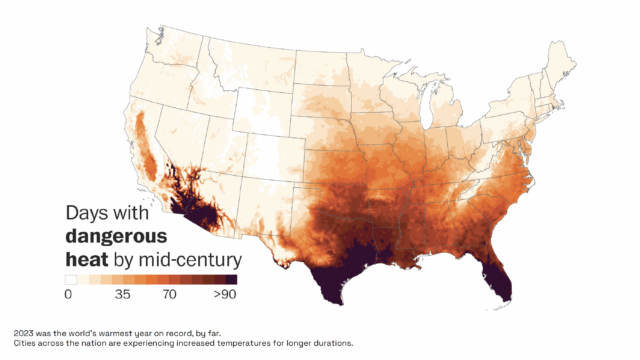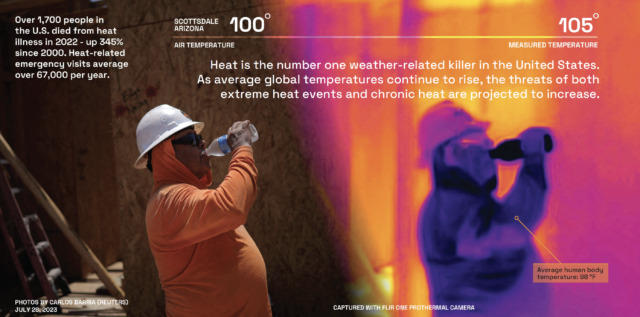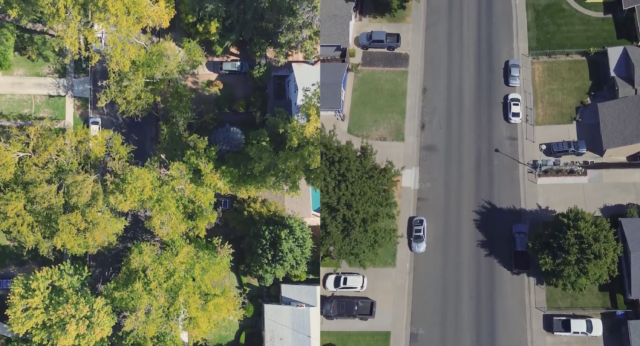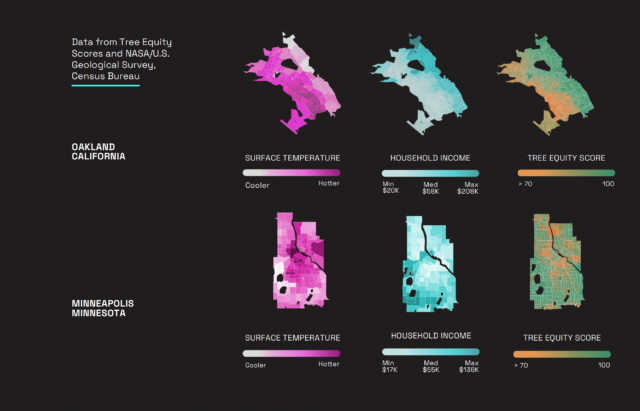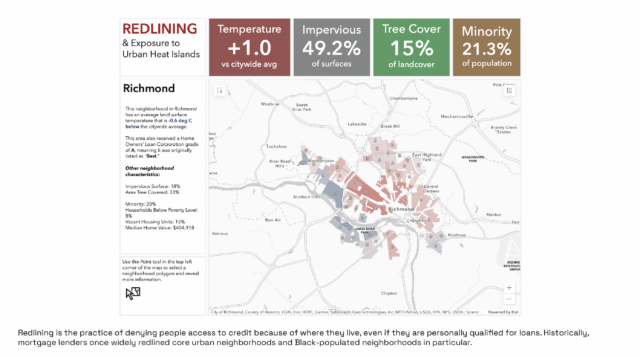about the project
The New York Times recently described San Antonio’s low income communities as “islands of heat” due to their lack of tree canopy coverage.1 As of July 31, San Antonio recorded 51 days at 100° or above, breaking heatwave records.2 Across the country, ever increasing heatwaves, for longer durations, are becoming the norm. As a result, ecological disparities are becoming apparent within disadvantaged communities. Lack of resources, limited incomes, physical and mental health concerns, coupled with high asphalt to planting ratios have threatened the livelihoods of people of color and low-income communities. The “Tree Equity Score” (TES) was made available as an online resource database to elucidate tree inequity in America. The TES is an interactive online platform that assigns a score based on how tree canopy and surface temperature align with income, employment, race, age and health factors. The scores indicate whether there are enough trees in specific neighborhoods or municipalities for everyone to experience the health, economic and climate benefits that trees provide. Thanks to this research, the dialogue surrounding tree equity has been initiated, prompting national agencies like the National Oceanic and Atmospheric Administration to research and develop methods to combat heat.3 The research studies also articulated that: In 92 percent of US communities, low-income neighborhoods have less tree cover than high-income neighborhoods. The rich have, on average, about 15 percent more tree cover and live in neighborhoods that are around 3 degrees F than the poor. This trend extends to race as well: In 67 percent of US communities, POC neighborhoods have less tree cover than white neighborhoods, even after accounting for trends in income.4
Follow cool_conscious_cities on Instagram to learn more.
1 Sandoval, Edgar. “In San Antonio, the Poor Live on Their Own Islands of Heat.” New York Times, 22 July 2022. https://www.nytimes.com/2022/07/26/us/texas-heat-poverty-islands-san-antonio.html
2 Spivey, Sarah. “San Antonio just experienced the hottest July on record: July 2022 also ends as the second hottest month ever recorded” 1 Aug. 2022, https://www.ksat.com/weather/2022/08/01/san-antonio-just-experienced-the-hottest-july-on-record/
3 Caputo, Anton. “UT Austin Teams Up With City and Community to Fight Extreme Heat in Austin” University of Austin, Texas – Texas Geosciences, 29 June 2021. https://www.jsg.utexas.edu/news/2021/06/ut-austinteams-up-with-city-and-community-to-fight-extreme-heat-in-austin/
4 McDonald, Rob. “Mapping Tree Inequality: Why Many People Don’t Benefit from Tree Cover.” Cool Green Science – Smarter By Nature, 28 April 2021. https://blog.nature.org/science/2021/04/28/mapping-tree-inequality-whymany-people-dont-benefit-from-tree-cover/

